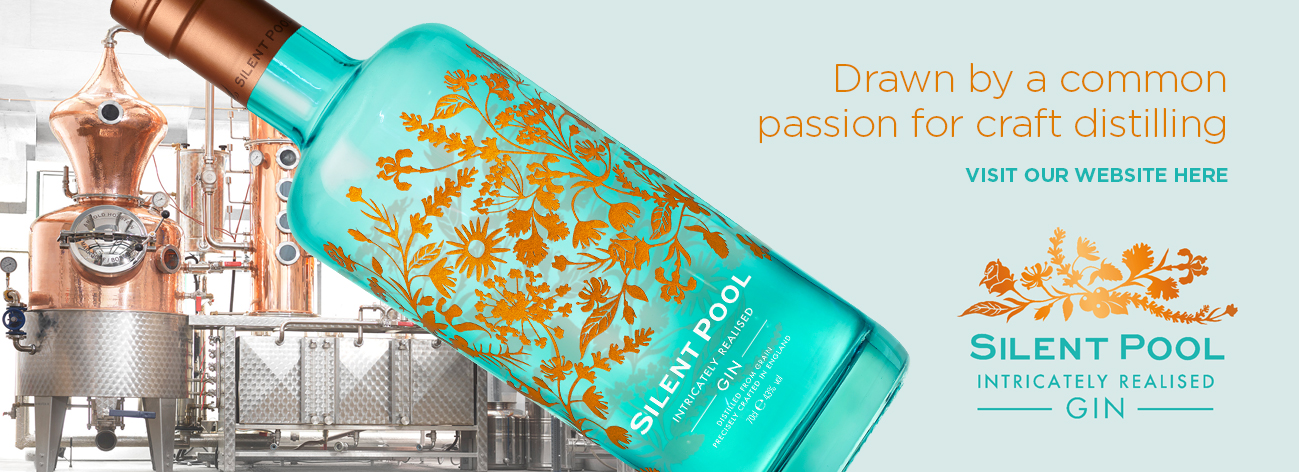TRAVEL
Surrey’s Premier Lifestyle Magazine
The big apple
Rebecca Underwood explore Vienna.
Boasting the most millionaires per square mile in the British Isles, the Crown Dependency of Jersey is considered one of the best places in the UK to eat, as Kevin Pilley experienced.
Boasting the most millionaires per square mile in the British Isles, the Crown Dependency of Jersey is considered one of the best places in the UK to eat, as Kevin Pilley experienced.
When you think of Jersey, gastric juices make us instantly think of its royal potatoes, heritage tomatoes (and carrots), Royal Bay oysters, lobsters, spider and chancre crabs, hand-dived scallops, bi-valve mussels and its beef, and the palate swoons. But Black Butter may not come so quickly to mind, although the ancient fare won’t diminish saliva production, it may increase the waistline.
Jersey cider butter is an ancient hangover from the times when the Channel Island was covered in apple orchards.
Every autumn cider drinkers at St. Lawrence’s La Faisie d’Cidre celebrate Jersey’s rich heritage of growing apples and making cider. The highlight is traditional cider making using horsepower to pulverize apples, then building layers of pulp on a press to extract juice. There is a crush to see ‘ye olde’ apple squeezing skills being demonstrated. Every other person appears to be an apple expert or ardent Black Butter enthusiast. The traditional farmhouse delicacy – called Beurre Nier in Jerrais (the local Norman-French dialect) – is spread on bread and toast or can be paired with cold meats or curry.
Cider has been made on Jersey since the sixteenth century, with the eighteenth century seeing its glory days. Cider supplemented wages so as not to waste the apple harvest. Black Butter-making co-operatives were common and making the conserve was an excuse for a party: Un Séthée de Beurre Nièr, Un soir de beurre noir or Black Butter Night.
Every October, National Trust Jersey holds a three-day Black Butter festival at its headquarters at The Elms, St Mary, an eighteenth century farmhouse at the head of the island’s St Peter’s Valley. Everyone is free to peel apples and stir the brass cauldron (bachin) with a traditional paddle or rabot. In the old days, the butter was made during two days over a giant fire.
Jersey cider butter is an ancient hangover from the times when the Channel Island was covered in apple orchards.
Every autumn cider drinkers at St. Lawrence’s La Faisie d’Cidre celebrate Jersey’s rich heritage of growing apples and making cider. The highlight is traditional cider making using horsepower to pulverize apples, then building layers of pulp on a press to extract juice. There is a crush to see ‘ye olde’ apple squeezing skills being demonstrated. Every other person appears to be an apple expert or ardent Black Butter enthusiast. The traditional farmhouse delicacy – called Beurre Nier in Jerrais (the local Norman-French dialect) – is spread on bread and toast or can be paired with cold meats or curry.
Cider has been made on Jersey since the sixteenth century, with the eighteenth century seeing its glory days. Cider supplemented wages so as not to waste the apple harvest. Black Butter-making co-operatives were common and making the conserve was an excuse for a party: Un Séthée de Beurre Nièr, Un soir de beurre noir or Black Butter Night.
Every October, National Trust Jersey holds a three-day Black Butter festival at its headquarters at The Elms, St Mary, an eighteenth century farmhouse at the head of the island’s St Peter’s Valley. Everyone is free to peel apples and stir the brass cauldron (bachin) with a traditional paddle or rabot. In the old days, the butter was made during two days over a giant fire.

View down to the bay - Photo copyright: The Atlantic Hotel
Brittany has a similar conserve called le beurre du pauvre. Based on medieval apple sauce, Jersey Black Butter has no artificial additives. Peeled and cored apples are traditionally cooked with black treacle, liquorice, cider, brown sugar and spices such as cinnamon. It’s available from La Mare Estate, which also makes Jersey Black Butter Chocolates, Black Butter Fudge and Black Butter Biscuits.
This year, from 1 October to 11 November, Jersey’s much-loved, fixed-price food festival Tennerfest is where all can eat well and inexpensively at some of the best restaurants on the island. There are many to choose from such as Longueville Manor with its Victorian garden and The Atlantic Hotel on La Mont de la Pulente, next to La Moye Golf Club looking across St. Ouen’s Bay. Its Ocean Restaurant has a market menu and executive chef Will Holland’s showcase seven-course tasting room menu features retired Jersey dairy cow beef tartare, as well as liquorice-confit lamb neck with sweetbread, gin and tonic granite and lychee mousse. Other restaurants offer menus from £10 to £17.50.
But Will is the man to sample: he was awarded his Michelin star before he was 30 years old and at thirteen he worked at a local butcher’s shop after school and weekends. He subsequently held positions at some of the UK’s finest eating establishments, including Gravetye Manor in Sussex and L’Ortolan Restaurant. In 2007 he opened La Bécasse in Ludlow, earning his first Michelin star 18 months after opening. Will opened Coast Restaurant, Pembrokeshire in 2014 to wide acclaim, named AA Restaurant of the Year for Wales 2015-2016. He joined The Atlantic Hotel as executive chef in October 2017.
Sumas at Gorey Hill has a local shellfish bisque as well as stunning pan-fried brill, crab ravioli fennel ceviche, gremolata and Dingley Dale pork belly with tamarind, seared squid, tamarind and, of course, apple.
In St Helier, visit the five AA Rosettes’ Bohemia Bar and Restaurant and have an aperitif on its roof terrace before getting stuck into turbot. Its tasting menu includes oyster casserole.
Also try Kismet Cabana at Quaisne Bay, St Brelade and Samphire on King Street in the main town of St Helier. If lucky, diners might be cooked traditional dishes such as bean crock (dried beans with pigs’ trotters), la soupe d’anguilles (conger eel soup) or fiottes (sugared flour and eggs). A word of warning, Jersey Cabbage Loaf is very musical.
This year, from 1 October to 11 November, Jersey’s much-loved, fixed-price food festival Tennerfest is where all can eat well and inexpensively at some of the best restaurants on the island. There are many to choose from such as Longueville Manor with its Victorian garden and The Atlantic Hotel on La Mont de la Pulente, next to La Moye Golf Club looking across St. Ouen’s Bay. Its Ocean Restaurant has a market menu and executive chef Will Holland’s showcase seven-course tasting room menu features retired Jersey dairy cow beef tartare, as well as liquorice-confit lamb neck with sweetbread, gin and tonic granite and lychee mousse. Other restaurants offer menus from £10 to £17.50.
But Will is the man to sample: he was awarded his Michelin star before he was 30 years old and at thirteen he worked at a local butcher’s shop after school and weekends. He subsequently held positions at some of the UK’s finest eating establishments, including Gravetye Manor in Sussex and L’Ortolan Restaurant. In 2007 he opened La Bécasse in Ludlow, earning his first Michelin star 18 months after opening. Will opened Coast Restaurant, Pembrokeshire in 2014 to wide acclaim, named AA Restaurant of the Year for Wales 2015-2016. He joined The Atlantic Hotel as executive chef in October 2017.
Sumas at Gorey Hill has a local shellfish bisque as well as stunning pan-fried brill, crab ravioli fennel ceviche, gremolata and Dingley Dale pork belly with tamarind, seared squid, tamarind and, of course, apple.
In St Helier, visit the five AA Rosettes’ Bohemia Bar and Restaurant and have an aperitif on its roof terrace before getting stuck into turbot. Its tasting menu includes oyster casserole.
Also try Kismet Cabana at Quaisne Bay, St Brelade and Samphire on King Street in the main town of St Helier. If lucky, diners might be cooked traditional dishes such as bean crock (dried beans with pigs’ trotters), la soupe d’anguilles (conger eel soup) or fiottes (sugared flour and eggs). A word of warning, Jersey Cabbage Loaf is very musical.
Crash a local event, community or fête and visitors may be propositioned with some Jersey Wonders Des Merveilles. Traditionally, Jersey housewives cooked their Wonders as the tide went out. If they cooked them on an incoming tide, the fat in which the Wonders were cooked would invariably overflow the pan. The nearest equivalent is the doughnut, although Wonders are never coated in sugar or filled with jam.
The more weight-conscious and less sweet-toothed just settle for a half pint of shrimps or prawns. The beachside La Braye Bistro at St Ouen Bay serves “seaside classics with a Mediterranean influence” as well as “ice-cream with surprise sprinkles”.
A select group of eco-led eateries have become conservation pioneers by incorporating Climavore dishes into their menus. The Atlantic presents diners with the taste of the tidal zone with Climavore amuse-bouches.
The more weight-conscious and less sweet-toothed just settle for a half pint of shrimps or prawns. The beachside La Braye Bistro at St Ouen Bay serves “seaside classics with a Mediterranean influence” as well as “ice-cream with surprise sprinkles”.
A select group of eco-led eateries have become conservation pioneers by incorporating Climavore dishes into their menus. The Atlantic presents diners with the taste of the tidal zone with Climavore amuse-bouches.
Jersey’s coastal landscape is undergoing a series of dramatic and worrying transformations due to human-induced climatic alterations, increasing acidification, algal blooms and the consequent disappearance of species. Jersey’s chefs are reconnecting to historic inhabitation practises: seaweed, kelp and bivalves, oysters and clams are crucial acts in water purification and carbon dioxide absorption. Jersey’s waiters and sommeliers tell that a single mussel filters 25 litres of water a day and an oyster 120 litres.
La Mare Estate’s wines are the local wine of choice. Its dry red Bailiwick is made from Pinot Noir, Regent and Rondo grape varieties, with medium dry Sainte-Marie a blend of Orion and Seyval Blanc grapes. The Estate also produces a candy floss on the nose, off dry Perquage rosé and Lillie (Langtry) sparkling rosé. On such an apple-obsessed island, La Mare also makes VSOP Jersey Apple brandy and Jersey Apple Brandy cream liqueur.
Perhaps the most unusual snack to be had is biltong. It’s Jersey’s latest export made by The Little Jersey Biltong Company also helping cater for the two thousand South Africans on the island. Le Hocq Inn at St Clement is the hub of consumption and very more-ish dried meat worship.
So look no further than Tennerfest for a delightful gastronomic gourmet journey.
essence info
www.tennerfest.com
www.jerseyblackbutter.com
www.lamarewineestate.com
La Mare Estate’s wines are the local wine of choice. Its dry red Bailiwick is made from Pinot Noir, Regent and Rondo grape varieties, with medium dry Sainte-Marie a blend of Orion and Seyval Blanc grapes. The Estate also produces a candy floss on the nose, off dry Perquage rosé and Lillie (Langtry) sparkling rosé. On such an apple-obsessed island, La Mare also makes VSOP Jersey Apple brandy and Jersey Apple Brandy cream liqueur.
Perhaps the most unusual snack to be had is biltong. It’s Jersey’s latest export made by The Little Jersey Biltong Company also helping cater for the two thousand South Africans on the island. Le Hocq Inn at St Clement is the hub of consumption and very more-ish dried meat worship.
So look no further than Tennerfest for a delightful gastronomic gourmet journey.
essence info
www.tennerfest.com
www.jerseyblackbutter.com
www.lamarewineestate.com


